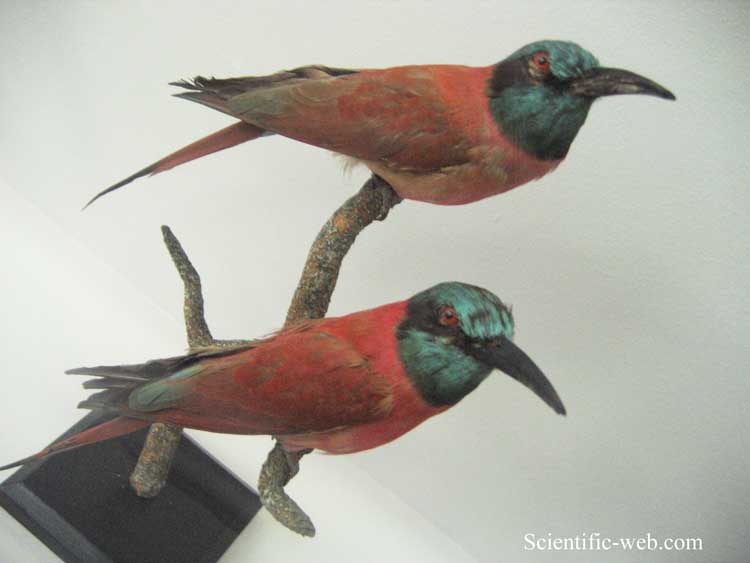Merops nubicus Cladus: Eukaryota Name Merops nubicus Gmelin, 1788 Reference Systema Naturae 1 pt1 p.464 Vernacular names The Northern Carmine Bee-eater Merops nubicus is a near passerine bird in the bee-eater family Meropidae. Alternative common names include the Carmine Bee-eater or the Nubian Bee-eater.
It is native to Benin, Burkina Faso, Cameroon, the Central African Republic, Chad, the Democratic Republic of the Congo, Côte d'Ivoire, Eritrea, Ethiopia, Gambia, Ghana, Guinea, Guinea-Bissau, Kenya, Liberia, Mali, Mauritania, Niger, Nigeria, Senegal, Sierra Leone, Somalia, Sudan, Tanzania, Togo and Uganda. It occurs as a vagrant in Burundi.[1] Description
The sexes are similar in appearance, and the juveniles can be distinguished from adults by their lack of elongated central tail feathers and the pinkish brown coloration of their mantle, chest to belly, and flanks. Behaviour Breeding They nest in large colonies in cliffs, usually near river banks, where they use there bills to dig long horizontal nesting tunnels, often eight feet or more in length. Three to five eggs are laid per clutch. Feeding Their diet is made up primarily of bees and other flying insects, such as grasshoppers and locusts. The main hunting strategy of bee-eater is to keep watch for flying insects from a perch, and then snatch them out of the air using their beaks, before returning to the perch. Call The call is a deep, throaty "tunk" in flight; a series of "rik" notes when perched. References 1. ^ a b BirdLife International (2009). Merops nubicus. In: IUCN 2010. IUCN Red List of Threatened Species. Version 2010.3. Downloaded on 28 September 2010. Source: Wikipedia, Wikispecies: All text is available under the terms of the GNU Free Documentation License |
|

